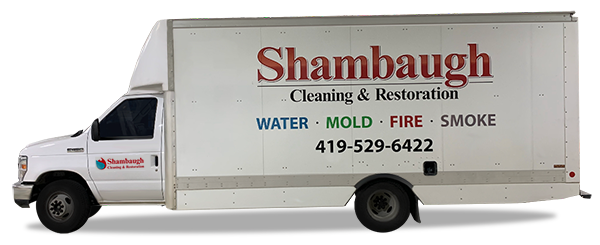Water damage can result in significant expenses due to a range of factors that necessitate extensive repairs and restoration efforts. When faced with water damage, it is essential to understand the various elements that contribute to the high costs involved. By exploring these factors and their impact, you can gain a better understanding of why water damage repairs can be costly.
Key Takeaways:
- Hiring water damage restoration experts is crucial to minimize secondary damage and prevent mold and mildew growth.
- The cost of water damage restoration increases if the water is contaminated, such as in the case of sewage backup or toilet overflow.
- Different categories of water damage, ranging from clean water to black water, have varying costs for restoration.
- The severity of the damage, classified as class 1 to class 4, also impacts the overall cost of repair.
- The location of the damage, such as roofs, floors, drywall, and ceilings, plays a role in determining the expenses.
Continue reading to learn more about the factors affecting water damage costs and how to minimize expenses.
Factors Affecting Water Damage Costs
Several factors contribute to the overall costs of water damage, including insurance coverage, repair expenses, restoration procedures, assessment methods, cleanup costs, and the expertise of restoration companies. Understanding these factors can help you better navigate the financial implications of water damage and make informed decisions.
Insurance coverage plays a crucial role in determining the extent to which your expenses will be covered. Review your policy to understand what types of water damage are included and what may be excluded. Some policies may cover burst pipes but not flood damage, for example. Familiarizing yourself with the terms and limitations of your insurance coverage is essential to avoid unexpected financial burdens.
Repair costs vary depending on the severity of the damage. Minor water damage, such as a small leak, may only require simple repairs and minimal expenses. However, extensive damage caused by flooding or a major pipe burst may involve more complex repairs, including structural repairs, electrical work, and replacing damaged materials. These repairs can significantly increase the overall cost.
The restoration process itself also affects the expenses associated with water damage. Professional restoration companies have the knowledge, experience, and specialized equipment to handle water damage effectively. Their expertise comes at a cost, but it ensures that the restoration process is carried out efficiently and thoroughly to minimize secondary damage and prevent mold and mildew growth.
In addition to repair and restoration costs, other factors such as water damage assessment and cleanup expenses can contribute to the overall price. Assessing the extent of the damage and identifying potential hazards is crucial in developing a comprehensive restoration plan. Cleanup costs can include removing water, drying out affected areas, and sanitizing the space to prevent bacterial or mold growth.
(H3: Importance of Hiring a Professional Water Damage Restoration Company)
Given the complexity and potential risks associated with water damage, it is highly recommended to enlist the services of a professional water damage restoration company. They have the expertise and equipment necessary to handle different types of water damage effectively. By hiring experts, you can ensure that the job is done correctly and efficiently, minimizing the risk of further damage and future issues.
By understanding the factors that influence water damage costs and taking preventive measures, such as regular maintenance of pipes and appliances, you can help avoid or minimize the financial impact of water damage. However, if water damage does occur, it is crucial to address it quickly. Prompt action can help prevent further damage and potential health risks, ultimately saving you from additional expenses.
Severity and Contamination Levels
The severity and contamination levels of water damage play a crucial role in determining the costs of restoration, with different categories of water damage having varying implications for the overall expenses.
When it comes to water damage, not all water is created equal. The category of water damage is determined by the level of contamination it carries. Clean water damage, often caused by leaky pipes or overflowing sinks, is the least severe and typically the least expensive to repair. On the other end of the spectrum is black water damage, which poses significant health risks due to its high level of contamination, often resulting from sewage backup or toilet overflow. Black water damage requires specialized cleaning and restoration techniques, making it the most expensive to repair.
In between clean water and black water are categories like gray water, which may come from sources such as washing machines or dishwashers and contains some level of contamination. Understanding the category of water damage is crucial as it determines the necessary precautions, restoration procedures, and associated costs.
Proper Assessment and Restoration:
Assessment and restoration of water damage should always be handled by professionals to ensure thorough cleaning and minimize potential health risks. Expert restoration companies have the knowledge, experience, and equipment to safely handle different categories of water damage, including the removal of contaminated materials and the prevention of mold and mildew growth.
By promptly addressing water damage and taking appropriate action based on the severity and contamination level, you can minimize both the immediate restoration costs and the potential long-term consequences.
Location of Damage
The location of water damage within a property significantly impacts the overall costs of repairs, with areas like the roof, floors, drywall, and ceilings presenting unique challenges and expenses. Water damage on the roof, for example, can lead to structural issues and require extensive repairs. Roof leaks can result in weakened support beams, damaged insulation, and mold growth. These repairs can be costly due to the specialized expertise and materials required.
Water damage to floors can also be expensive to repair. Depending on the type of flooring, such as hardwood or carpet, the water may seep through and cause damage to subfloors or the foundation. In some cases, entire sections of flooring may need to be replaced, especially if the water damage is extensive.
Drywall and ceilings are also vulnerable to water damage. When water infiltrates these areas, it can lead to structural instability, mold growth, and aesthetic issues. Repairing damaged drywall or ceilings often involves removing and replacing the affected areas, which can be labor-intensive and time-consuming.
Impact on Costs
The cost of repairing water damage to the roof, floors, drywall, and ceilings is influenced by factors such as the extent of the damage, the materials needed for restoration, and the complexity of the repairs. Additionally, if there is mold growth resulting from the water damage, additional remediation and restoration work will be necessary, further increasing the overall cost.
It is important to address water damage promptly to prevent further damage and minimize costs. Hiring professionals with experience in water damage restoration is crucial, as they have the knowledge and equipment to properly assess the extent of the damage and implement effective repairs. Professionals can also identify hidden areas or secondary damage that may not be immediately apparent, ensuring comprehensive restoration.
By understanding the impact of water damage on different areas of a property and the associated costs, property owners can take proactive measures to prevent water damage and mitigate potential expenses. Regular maintenance, prompt repairs, and a proactive approach to preventing water intrusion can help safeguard against water damage and its high costs.
Additional Factors Influencing Costs
In addition to the primary factors, several secondary factors, including labor costs, emergency callouts, and geographic location, contribute to the total expenses of water damage restoration.
Labor costs play a significant role in determining the overall price of water damage repair. Skilled technicians are required to assess the damage, perform the necessary repairs, and restore your property to its pre-damage condition. The complexity of the restoration process and the number of professionals involved can impact the final cost.
Emergency callouts are often necessary in cases of severe water damage. These urgent response services are available 24/7 and come at an additional cost. When you’re faced with a water emergency, quick action is crucial to minimize further damage, but it’s important to be aware that emergency services may come at a premium.
Geographic location
The geographic location of your property can also affect the cost of water damage restoration. Prices can vary depending on the local market rates, the availability of restoration companies, and the level of competition. Additionally, factors such as accessibility, local regulations, and the cost of living in your area may influence the overall expenses.
While it may be tempting to cut costs and attempt water damage repairs on your own, it is important to consider the potential risks and long-term consequences. Hiring professionals ensures that the job is done correctly, minimizing the chances of further damage and preventing issues like mold and mildew growth. When faced with water damage, it is best to act quickly and seek professional help to address the problem effectively and minimize costs in the long run.
Preventive Measures and Quick Response
Taking proactive measures to prevent water damage and responding promptly when it occurs can significantly reduce the costs associated with repairs and restoration. By following a few preventive steps, you can minimize the risk of water damage in your home or business.
Regularly inspecting and maintaining your pipes, plumbing fixtures, and appliances can help identify potential leaks or issues before they escalate. Ensure that all connections are secure, and address any signs of corrosion or deterioration immediately.
Another important preventive measure is to keep gutters and downspouts clear of debris, ensuring proper water flow away from your home’s foundation. Installing a sump pump in your basement or crawl space can also help prevent water damage from flooding or groundwater intrusion.
In case water damage does occur, a quick response is crucial. Contacting a professional water damage restoration company promptly can help mitigate further damage and prevent the growth of mold and mildew. These experts have the knowledge, tools, and experience to assess the situation, extract water, dry affected areas, and restore your property efficiently and effectively.






